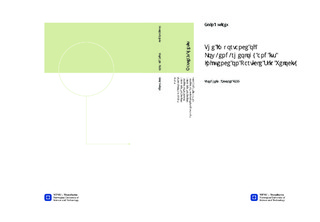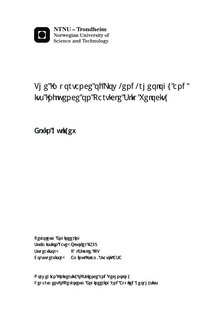| dc.description.abstract | The study of effective cuttings transports and understanding fluid rheological properties is a major concern in the drilling industry. Poor hole cleaning can lead to cuttings accumulations inside the annulus, low rate of penetration (ROP), eccentric borehole, fluid loss and stuck pipe. However, introduction of low-shear-rate viscosity (low-end-rheology) mud system into drilling activities can significantly reduce aforementioned problems. In this study, both theoretical analysis and experimental investigation were performed to estimate effects of low-end-rheology mud on particle settling velocity in a vertical cylinder, for static condition and steady state laminar flow in vertical annulus. Experimental tests were carried out in a flow-loop, using a low-end-rheology and standard rheology (water). Variables evaluated were particle size (0.3 mm, 1 mm, 2 mm), tube inner diameter or annular size (39.58 mm, 49.37 mm, 60.2 mm, 75 mm), fluid rheological parameters (water, mixtures of 5, 10 and 20 gram of PHPA Polymer per liter water), fluid condition (static and dynamic flow), particle sphericity (0.91 and 1). Fluid rheological parameters, particle size, and annular flow velocity were the most important variables. Annular flow velocities were 0 m/s for static and 0.00001-0.004 m/s for dynamic flow conditions. The experimental data showed that particles dropped in low-end-rheology fluid had a lower slip velocity compared to standard rheology. Study of the rheology and factors influencing its properties were also part of this thesis work. During the tests, a fluid sample of 10% PHPA polymer-water mixture showed unexpected behavior. A detailed laboratory study verified that the rheological properties may change under the influence of mixing and no-action times and they are sensitive to the fluid shaking (shearing/stirring).A comparison of the experimental particle settling velocities with particle settling velocities calculated by applying Stokes Law equation are also presented. Their results agree closely with experimental data for the slip velocity for particle settling in static and at steady state laminar flow for vertical annulus for the most of the cases. In other words, predicting of slip velocity by applying Stokes Law equation based on effective viscosity determined through Power Law fluid model showed favorable results for both quiescent and flowing fluid.Sensitivity analysis based on the results concluded that particle transport in low-shear-rate-viscosity mud system provides better hole cleaning since the slip velocities of particles are lower compared to the standard rheology for the given experiment. | nb_NO |

